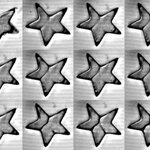Microbiology

Scientists have unravelled a potential mechanism for how top-level rowers develop enlarged strengthened hearts as a result of long-term intensive training.
The research in the August edition of Clinical Endocrinology suggests a causal link between naturally occurring hormone levels and strengthening of the heart muscle in professional rowers. Elite rowers were found to have higher levels of insulin-like growth factor 1 (IGF-1) compared to healthy sedentary volunteers. In these athletes, IGF-1 values correlate with enlargement and strengthening of heart muscle cells.
IGF-1 is a hormone that…

Low levels of naturally occurring antibodies may represent an increased risk of developing cardiovascular disease, particularly stroke in men. This discovery, published in Atherosclerosis, has now led to attempts to develop an immunization against cardiovascular disease.
Atherosclerosis (hardening of the arteries) is an inflammatory disease in which the walls of the blood vessels are thickened and become less elastic. It can cause blood clots and other cardiovascular diseases. It is not known precisely what causes atherosclerosis, but the immune system probably plays an important role.…

A strain of mice with the natural ability to repair damaged cartilage may one day lead to significant improvements in treatment of human knee, shoulder and hip injuries.
Researchers at Oregon Health & Science University have discovered males from a strain of mice called MRL/MpJ have the innate ability to repair their own knee cartilage. "We think there is something special about these mice," said Jamie Fitzgerald, Ph.D., assistant professor of orthopedics and rehabilitation in the OHSU School of Medicine. "They have the ability to regenerate cartilage."
"Knee pain is one of the most…

Cut off one finger from a salamander and one will grow back. Cut off two and two will grow back. It sounds logical, but how the salamander always regenerates the right number of fingers is a biological mystery.
The salamander isn't the only animal with this regenerative ability. Take the sea squirt, Ciona intestinalis, a cylindrical marine creature about the size of a small cucumber that regularly loses its siphons, or feeding tubes, to hungry predators.
At the base of each siphon are eight photoreceptors, cells used to detect light. Whenever the sea squirt experiences a violent loss at the…

Cells are intrinsically artistic. When the right signals tell a cell to divide, it usually splits down the middle, resulting in two identical daughter cells, though stem cells are the exception to the rule. This natural symmetry is visible on the macroscopic scale as well. All living creatures, be they mushrooms or humans, are visibly symmetric, a product of our cells' preference for equilibrium.
Scientists at the Marine Biological Laboratory (MBL) Whitman Center for Visiting Research are curious to know what cues tell a cell to divide at the center. Fred Chang, professor of microbiology at…

A new discovery could lead to treatments which turn off the inflammation in the lungs caused by influenza and other infections, according to a study published today in the journal Nature Immunology.
The symptoms of influenza, such as breathlessness, weight loss and fever, are made much worse by the immune system responding in an exaggerated way to the virus, rather than by the virus itself. The virus is often cleared from the body by the time symptoms appear and yet symptoms can last for many days, because the immune system continues to fight the damaged lung.
The immune system is essential…

The question of whether insulin-producing cells of the pancreas can regenerate is key to our understanding of diabetes, and to the further development of regenerative therapies against the disease. Dr Rosenberg from the McGill University Health Centre (MUHC) and McGill University together with Dr Bernard Massie from the Centre hospitalier de l'Université de Montréal (CHUM) have just concluded that they can. The results of their study have been published in the July issue of the journal Laboratory Investigation.
The researchers have shown in vitro that insulin-producing β-cells (beta cells)…

For millennia, humans and viruses have been locked in an evolutionary back-and-forth -- one changes to outsmart the other, prompting the second to change and outsmart the first.
With retroviruses, which work by inserting themselves into their host's DNA, the evidence remains in our genes. Last year, researchers at Rockefeller University and the Aaron Diamond AIDS Research Center brought an ancient retrovirus back to life and showed it could reproduce and infect human cells. Now, the same scientists have looked at the human side of the story and found evidence that our ancestors fought back…

Viruses achieve their definition of success when they can thrive without killing their host. Now, biologists Pamela Bjorkman and Zhiru Yang of the California Institute of Technology have uncovered how one such virus, prevalent in humans, evolved over time to hide from the immune system.
The human immune system and the viruses hosted by our bodies are in a continual dance for survival--viruses ever seek new ways to evade detection, and our immune system devises new methods to hunt them down. Human Cytomegalovirus (HCMV), says Bjorkman, Caltech's Delbrück Professor of Biology and a Howard…

By injecting purified stem cells isolated from adult skeletal muscle, researchers have shown they can restore healthy muscle and improve muscle function in mice with a form of muscular dystrophy. Those muscle-building stem cells were derived from a larger pool of so-called satellite cells that normally associate with mature muscle fibers and play a role in muscle growth and repair.
In addition to their contributions to mature muscle, the injected cells also replenished the pool of regenerative cells normally found in muscle. Those stem cells allowed the treated muscle to undergo subsequent…